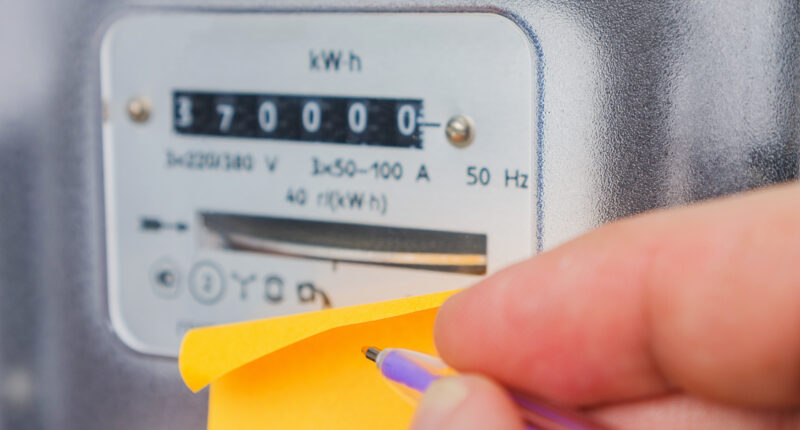MILLIONS of households must take a meter reading next week ahead of a big energy price cap change.
Energy bills are set to drop this summer and it’s good news for bill payers struggling with rising prices and food costs.
The energy regulator Ofgem confirmed last month that the typical gas and electricity bills will be capped at £2,074 a year from July 1.
This will take effect when the government’s Energy Price Guarantee, which limits the typical domestic energy bill to £2,500, ends on Friday.
It means that the fall in the price cap will reward households battling the cost of living with a £426 annual saving.
But it is important to households to make sure they have taken a meter reading before midnight on June 30.


An updated meter reading helps stop your supplier from determining bill prices that aren’t accurate to your usage.
Even though bills will be dropping, it’s still important to take a meter reading to make it as easy as possible.
In addition, if you are disputing a bill, taking a meter reading is a must.
If it’s lower than your estimate, you can ask your provider to lower your monthly direct debit to a more suitable amount.
Most read in Money
The energy price cap works by setting a limit on the maximum amount suppliers can charge for each unit of gas and electricity.
It’s not a cap on how much you can be charged for the energy that you use – so if you use more, you’ll pay more.
Below we explain how gas and electricity rates are changing and how you can calculate your bill.
How are gas and electricity rates changing and how can I calculate my bill?
Currently, a typical household that pays their energy bill by direct debit pays the following rates:
- 10.31p per kilowatt hour (p/kWh) for gas
- 33.21p/kWh for electricity
- A standing charge of 29.11p per day for gas
- A standing charge of 52.97p per day for electricity
But from July 1, Ofgem will introduce the following new rates:
- 7.51p p/kWh for gas
- 30.11p p/kWh for electricity
- A standing charge of 29.11p per day for gas
- A standing charge of 52.97p per day for electricity
To calculate how much you will pay from July 1, you will need to find out both your unit rate for gas and electricity and the standing charge for each fuel type.
The unit rate will usually be shown on your bill in p/kWh.
The standing charge is a daily charge that is paid 365 days of the year – irrespective of whether or not you use any gas or electricity.
You will then need to note down your own annual energy usage from a previous bill.
Once you have these details you can work out your gas and electricity costs separately.
Multiply your usage in kWh by the unit rate cost in p/kWh for the corresponding fuel type – this will give you your usage costs.
You’ll then need to multiply each standing charge by 365 and add this figure to the totals for your usage – this will then give you your annual costs.
Divide this figure by 12 and you’ll be able to work out how much you should expect to pay each month from July 1.
The average prepayment meter household currently pays:
- 10.55p per kWh for gas
- 32.05p per kWh for electricity
- A standing charge of 37.80p per day for gas
- A standing charge of 58.08p per day for electricity
From July 1 PPM customers will pay the following:
- 7.11p per kWh for gas
- 29.06p per kWh for electricity
- A standing charge of 37.80p per day for gas
- A standing charge of 58.08p per day for electrictity
Households who don’t pay by direct debit or a prepayment meter and instead pay on receipt of their bill will spend slightly more.
This is because there’s a separate unit rate and standing charge cap for this payment method.
Ofgem used to set the price cap every six months. But since August last year, it now reviews the limit every three months.


This means that annual energy bills may drop change again when the next price cap comes into force in October.
If you think your bill isn’t reflecting the lower rates from July, you can challenge it with your energy supplier.
Do you have a money problem that needs sorting? Get in touch by emailing [email protected].
You can also join our new Sun Money Facebook group to share stories and tips and engage with the consumer team and other group members.









